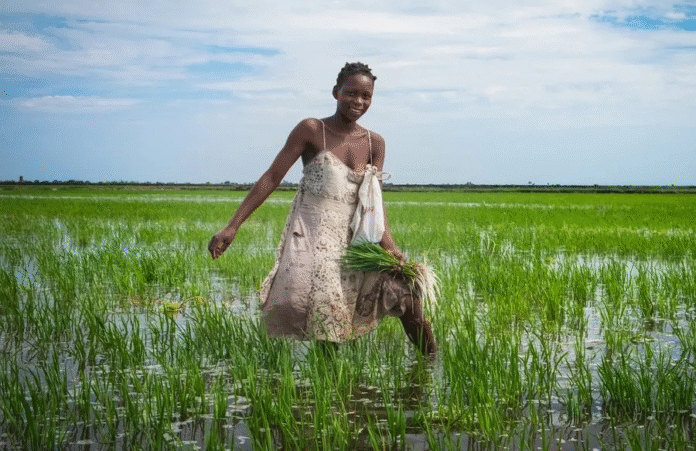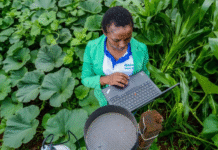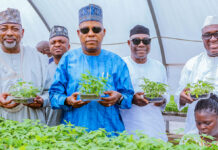Illustrative Image: How Africa’s Traditional Farming Practices Can Feed the World and Restore the Planet
Image Source & Credit: TRT AFRIKA
Ownership and Usage Policy
Introduction: A Growing World, A Pressing Challenge
The world’s population has expanded at an unprecedented rate since the Industrial Revolution. In 1950, there were just 2.5 billion people on the planet; by November 2022, that number had reached 8 billion. Projections by the United Nations estimate that the global population will rise to approximately 9.7 billion by 2050, and peak around 10.4 billion by the mid-2080s.
Nowhere is this growth more rapid than in Africa. From a population of 283 million in 1960, the continent now hosts about 1.5 billion people, with forecasts suggesting that figure will double to 2.5 billion by 2050. More than half of the world’s population growth between 2022 and 2050 will occur in Africa alone.
Such demographic change presents enormous challenges — especially in food security. Feeding a rapidly growing population while sustaining natural ecosystems has become a global priority, enshrined in Sustainable Development Goal 2 (Zero Hunger). However, Africa’s agricultural systems face an uphill battle: soil degradation, erratic climate conditions, pests, and poor access to markets all threaten productivity.
To sustainably meet global food needs, the world’s agricultural output will need to double by 2050. But how can this be achieved without further degrading the environment? Increasingly, the answer points toward Africa’s smallholder farmers and traditional agricultural practices — time-tested systems that enhance productivity while protecting ecosystems.
Africa’s Agricultural Backbone: Smallholders and Traditional Practices
Across Africa, smallholder farmers account for over 60% of the agricultural labor force and produce nearly 80% of the continent’s food. These farmers operate on limited land, often using low-cost and indigenous methods refined over centuries of observation and adaptation to local environments.
Traditional African agricultural techniques include:
-
Crop rotation – alternating crops on the same land to maintain soil fertility.
-
Cover cropping – planting vegetation to protect the soil between main crops.
-
Agroforestry – integrating trees with crops or livestock to enrich soil and prevent erosion.
-
Mulching and composting – recycling organic waste into natural fertilizer.
-
Fallowing and shifting cultivation – allowing land to rest and regenerate after cultivation cycles.
Far from being outdated, these approaches offer sophisticated ecological and agronomic benefits. They restore soil fertility, encourage microbial diversity, enhance water retention, and reduce erosion. Over time, they also increase carbon sequestration, helping mitigate climate change while improving crop resilience and yield stability.
These methods form the essence of regenerative agriculture, a concept now celebrated in global sustainability circles but deeply rooted in Africa’s agrarian traditions.
The Industrial Agriculture Dilemma
Since the 1970s, many global agricultural policies have favored large-scale, industrial farming — characterized by heavy mechanization, monocropping, and extensive use of chemical fertilizers and pesticides. While these systems can deliver high short-term yields, they also bring significant environmental and social costs.
Industrial agriculture:
-
Depletes soil nutrients and reduces biodiversity.
-
Pollutes water systems through agrochemical runoff.
-
Emits large amounts of greenhouse gases, especially nitrous oxide from fertilizers.
-
Contributes to “hidden hunger” — where crops are high in calories but low in essential nutrients.
In developing regions, these systems also tend to displace smallholder farmers, increase rural inequality, and erode local knowledge systems. The long-term impacts are degraded soils and unsustainable dependence on imported chemical inputs.
The Food and Agriculture Organization (FAO) warns that up to 90% of the world’s arable soils could be degraded by 2050 if current industrial practices persist—an alarming signal that the global food system must evolve.
Reviving Traditional Systems for Modern Sustainability
The path forward lies not in discarding modern science but in harmonizing it with Africa’s traditional ecological knowledge. Smallholder agricultural systems embody a holistic understanding of the land — one that integrates soil health, water conservation, and biodiversity.
When combined with modern innovations (such as improved seed varieties, organic certification, and digital extension services), traditional methods can form the foundation for climate-smart, regenerative agriculture.
For example:
-
Crop diversification reduces pest outbreaks and stabilizes yields under climate stress.
-
Organic soil management improves carbon retention, creating both climate and productivity gains.
-
Community seed banks and indigenous crops preserve genetic diversity and resilience.
These approaches turn farms into living ecosystems rather than extractive factories — ensuring food systems that are productive, adaptive, and sustainable.
Policy and Investment: Unlocking the Potential
Despite their promise, smallholder and traditional farming systems face structural challenges: limited access to credit, markets, and extension services. Moreover, traditional methods often yield benefits only after several seasons, making it difficult for resource-poor farmers to adopt them without short-term incentives.
Governments and development partners can change this dynamic through policy innovation and targeted investment:
-
Incentives and subsidies for farmers practicing regenerative or eco-friendly agriculture.
-
Crop insurance and risk-sharing schemes to protect farmers during the transition period.
-
Market linkages through off-taker agreements that guarantee buyers for sustainably produced crops.
-
Education and extension programs to promote awareness of the environmental and health benefits of traditional practices.
Countries like Kenya, Rwanda, and Ghana are already experimenting with such models. Kenya’s Food Systems Resilience Program, Rwanda’s Voice for Change Partnership, and Ghana’s Planting for Food and Jobs (PFJ) all emphasize resilience, nutrition, and smallholder support. Similarly, Ghana’s School Feeding Program integrates local produce into school meals, creating a direct market for small farmers while improving child nutrition.
If scaled effectively, these initiatives can create a circular system where eco-friendly farming, healthy consumption, and local economic development reinforce one another.
Conclusion: Africa’s Gift to the Future
Feeding a global population of nearly 10 billion will not be achieved through technology or industrial expansion alone. It requires reimagining how food is produced — and by whom. Africa’s smallholder farmers and their traditional practices offer a blueprint for a sustainable, regenerative, and inclusive food system.
By recognizing, investing in, and scaling these indigenous agricultural systems, the world can achieve two simultaneous goals: ending hunger and healing the planet.
Africa’s traditional agriculture is not a relic of the past — it is the pathway to the future of global food security.
















 The African Research (AR) Index is a comprehensive scholarly directory and database focused explicitly on journal publishers that publish and disseminate African research.
The African Research (AR) Index is a comprehensive scholarly directory and database focused explicitly on journal publishers that publish and disseminate African research.

